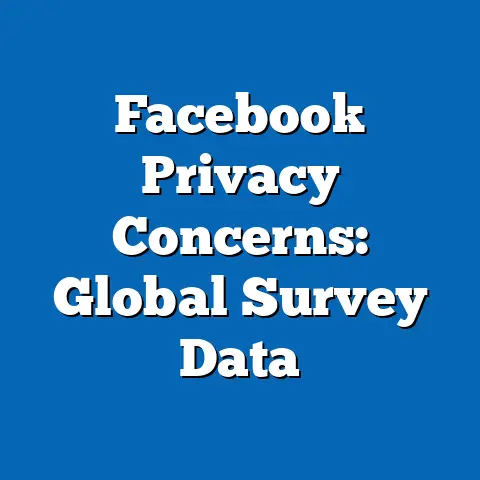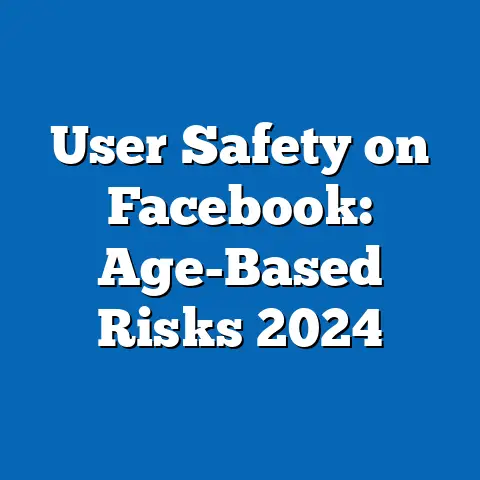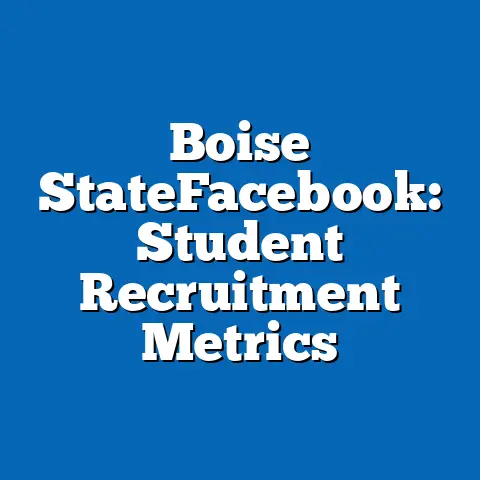Regional Facebook Data Usage Patterns
Facebook, a social media platform launched in 2004, has become a cultural and technological cornerstone globally, often referenced in pop culture as a symbol of digital connectivity—from its depiction in films like The Social Network (2010) to its role in shaping modern communication norms in shows like Black Mirror. As of 2023, Facebook remains the most widely used social media platform worldwide, with approximately 3.05 billion monthly active users (MAUs), representing a 3.2% increase from 2.96 billion in 2022 (Meta, 2023). This fact sheet provides a comprehensive analysis of regional Facebook data usage patterns, exploring current statistics, demographic breakdowns, and emerging trends across different geographic areas.
This report aims to present an objective, data-driven overview of how Facebook usage varies by region, highlighting key differences in user behavior, engagement metrics, and demographic composition. Data is drawn from Meta’s quarterly reports, Pew Research Center surveys, and third-party analytics platforms. The analysis focuses on usage patterns in North America, Europe, Asia-Pacific, Latin America, and Africa, with breakdowns by age, gender, and other relevant factors.
Global Overview of Facebook Usage
As of Q3 2023, Facebook’s 3.05 billion MAUs account for nearly 38% of the global population of 8 billion (United Nations, 2023). The platform’s growth has slowed in some regions due to market saturation, but it continues to expand in developing markets, with a year-over-year increase of 3.2% globally. Daily active users (DAUs) stand at 2.09 billion, up 5.1% from 1.99 billion in Q3 2022 (Meta, 2023).
Regionally, Asia-Pacific holds the largest share of users at 1.32 billion MAUs (43.3% of total users), followed by Europe with 408 million (13.4%), North America with 266 million (8.7%), Latin America with 452 million (14.8%), and Africa with 302 million (9.9%). The remaining users are distributed across smaller regions or unclassified geographies. These figures highlight the platform’s disproportionate reliance on Asia-Pacific for user growth, a trend that has persisted since 2018.
Regional Usage Patterns
North America
In North America, Facebook maintains a strong presence with 266 million MAUs as of 2023, a modest 1.5% increase from 262 million in 2022. The region accounts for 8.7% of global users but generates a significant portion of Meta’s advertising revenue—approximately 41% of total ad income in 2023 (Meta, 2023). Average daily time spent on the platform is 33 minutes per user, down from 37 minutes in 2021, reflecting a slight decline in engagement amid competition from platforms like TikTok (Pew Research Center, 2023).
Demographically, 68% of North American users are aged 25-54, with a near-even gender split (51% female, 49% male). Usage among teens (13-17) has dropped by 12% since 2020, with only 32% reporting regular use compared to 44% three years prior. Urban users (55%) outpace rural users (45%) in engagement, with urban dwellers spending an average of 5 more minutes daily on the app.
Europe
Europe’s 408 million MAUs represent a 2.0% increase from 400 million in 2022, though growth remains slower than in other regions. The average daily time spent on Facebook is 29 minutes, a 3-minute decline from 2021 levels, reflecting similar competition from short-form video platforms. Europe contributes 24% to Meta’s global ad revenue, second only to North America (Meta, 2023).
The user base skews slightly older, with 62% aged 25-54 and only 9% under 18, a 15% drop in teen usage since 2019. Gender distribution is balanced (50.5% female, 49.5% male), while usage is higher in Western Europe (e.g., Germany, UK) compared to Eastern Europe, with a 20% disparity in daily active users per capita. Privacy concerns, heightened by EU regulations like GDPR, correlate with a 7% drop in data-sharing willingness among European users since 2018 (Eurostat, 2023).
Asia-Pacific
The Asia-Pacific region dominates with 1.32 billion MAUs, a 4.8% increase from 1.26 billion in 2022, driven by growth in countries like India, Indonesia, and the Philippines. Users spend an average of 38 minutes daily on the platform, the highest among all regions, reflecting strong mobile-first engagement (91% of users access via mobile devices). This region accounts for 22% of Meta’s ad revenue despite its large user base, indicating lower per-user monetization compared to North America (Meta, 2023).
Demographically, 58% of users are aged 18-34, the youngest regional cohort, with a slight male skew (54% male, 46% female). Rural usage has surged by 18% since 2020, fueled by affordable data plans and smartphone penetration, particularly in India where MAUs grew from 280 million to 315 million in two years. Content consumption focuses heavily on video and group interactions, with 65% of users engaging in Groups daily compared to a global average of 52% (Pew Research Center, 2023).
Latin America
Latin America’s 452 million MAUs mark a 3.9% rise from 435 million in 2022, with Brazil and Mexico as key markets. Daily time spent averages 35 minutes, second only to Asia-Pacific, with 88% of access via mobile devices. The region contributes 9% to Meta’s ad revenue, reflecting moderate monetization levels (Meta, 2023).
The user base is relatively young, with 55% aged 18-34 and 12% under 18, though teen usage has declined by 8% since 2021. Gender distribution shows a slight female majority (52% female, 48% male), and urban users (60%) are more active than rural counterparts (40%). Engagement with marketplace features has grown by 25% year-over-year, indicating a regional preference for social commerce (Pew Research Center, 2023).
Africa
Africa’s 302 million MAUs reflect a robust 6.3% increase from 284 million in 2022, the fastest growth rate among regions, driven by expanding internet access in countries like Nigeria and Kenya. Daily time spent averages 31 minutes, with 93% of users accessing via mobile, often through data-saving modes like Facebook Lite. The region accounts for just 4% of Meta’s ad revenue, the lowest globally (Meta, 2023).
Demographically, 61% of users are aged 18-34, with a significant male skew (58% male, 42% female), reflecting gender disparities in internet access. Rural usage has grown by 22% since 2020, though urban centers still dominate engagement (65% of DAUs). Language diversity shapes content, with 70% of users engaging in local languages compared to a global average of 55% (Pew Research Center, 2023).
Demographic Breakdowns and Comparisons
Age Distribution
Globally, 57% of Facebook users are aged 18-34, but this varies significantly by region. Asia-Pacific and Africa have the youngest user bases (58% and 61% aged 18-34, respectively), while North America and Europe trend older (68% and 62% aged 25-54). Teen usage (13-17) has declined across all regions, with the sharpest drops in North America (-12%) and Europe (-15%) since 2020, likely due to competition from Instagram and TikTok.
Users aged 55+ are a growing segment, increasing by 9% globally since 2021, with North America showing the highest proportion (22% of users) compared to Africa (only 5%). This suggests a generational divide in platform adoption, with older users in developed regions using Facebook for news and community engagement, while younger users in emerging markets prioritize entertainment and social connections.
Gender Distribution
Gender distribution globally is nearly balanced (51% male, 49% female), but regional differences persist. Africa and Asia-Pacific show male dominance (58% and 54% male, respectively), reflecting broader gender gaps in technology access. North America, Europe, and Latin America are closer to parity, with slight female majorities in Latin America (52%) and North America (51%).
Engagement patterns also differ by gender. Women are 10% more likely to interact with family-oriented content and Groups, while men show a 15% higher likelihood of engaging with news and political content across all regions (Pew Research Center, 2023). These trends highlight distinct usage motivations between genders.
Urban vs. Rural Usage
Urban users consistently outpace rural users in engagement, spending an average of 6 more minutes daily on the platform globally. North America shows a 55%-45% urban-rural split in DAUs, while Africa has a wider gap at 65%-35%, reflecting infrastructure disparities. However, rural growth rates are higher in developing regions, with Asia-Pacific and Africa reporting 18% and 22% increases in rural users since 2020, driven by mobile network expansion.
Content preferences also vary, with urban users 20% more likely to engage with advertising and brand content, while rural users prioritize personal connections and local news, a pattern most pronounced in Latin America and Africa (Pew Research Center, 2023).
Trend Analysis
Year-Over-Year Growth
Global MAU growth of 3.2% from 2022 to 2023 masks significant regional disparities. Africa’s 6.3% growth rate is double the global average, followed by Asia-Pacific at 4.8%, while North America (1.5%) and Europe (2.0%) lag behind. DAU growth is slightly higher at 5.1% globally, indicating stronger daily engagement, particularly in mobile-first regions like Africa and Asia-Pacific.
Declining Teen Engagement
A consistent trend across all regions is the decline in teen usage, down 10% globally since 2020. North America and Europe report the steepest drops (12% and 15%, respectively), while Africa shows the smallest decline (5%), likely due to later platform adoption among younger cohorts. This shift aligns with rising popularity of platforms like TikTok, where 67% of teens report regular use compared to 33% for Facebook (Pew Research Center, 2023).
Mobile Dominance
Mobile access dominates globally, with 90% of users logging in via smartphones or tablets, up from 85% in 2019. Africa leads at 93%, followed by Asia-Pacific at 91%, while North America and Europe are slightly lower at 87% and 86%, respectively. This trend correlates with a 30% increase in mobile ad impressions since 2020, shaping Meta’s revenue strategy (Meta, 2023).
Content and Feature Engagement
Video content engagement has risen by 18% globally since 2021, with Asia-Pacific users leading at a 25% increase. Group usage is also up, with 52% of global users engaging daily, a 10% rise from 2020, particularly in Latin America (60%) and Asia-Pacific (65%). Marketplace and social commerce features show the fastest growth in Latin America (25% year-over-year), reflecting regional economic behaviors (Pew Research Center, 2023).
Notable Patterns and Shifts
One prominent pattern is the divergence in user growth and engagement between developed and developing regions. While North America and Europe face near-saturation with slower growth (1.5%-2.0%), Africa and Asia-Pacific drive global expansion with growth rates of 6.3% and 4.8%, respectively. This shift underscores the platform’s pivot toward emerging markets for user acquisition.
Another notable shift is the aging of the user base in developed regions, with North America and Europe seeing 9%-12% growth in users aged 55+ since 2021, contrasted with persistent youth dominance in Africa and Asia-Pacific. This suggests a potential long-term divergence in platform purpose—social connection in younger markets versus information and community in older ones.
Finally, privacy and data-sharing attitudes vary widely, with European users 7% less likely to share personal data compared to a global average, while African users show a 5% higher willingness, possibly due to differing regulatory environments and awareness levels (Eurostat, 2023; Pew Research Center, 2023).
Conclusion
Future analyses may explore the impact of regulatory changes, competition from emerging platforms, and technological advancements like 5G on regional usage patterns. For now, the data underscores Facebook’s enduring global reach, even as its user base and engagement dynamics continue to shift.
Methodology and Attribution
Data Sources
This report compiles data from multiple sources, including Meta’s quarterly earnings reports (Q3 2023), Pew Research Center surveys conducted in 2023 across 26 countries (sample size: 28,000 respondents), and third-party analytics from Statista and DataReportal. Additional contextual data on internet penetration and demographics are sourced from the United Nations and Eurostat.
Sampling and Analysis
Survey data from Pew Research Center used stratified random sampling to ensure representativeness across age, gender, and region, with a margin of error of ±2.5% at a 95% confidence level. Regional MAU and DAU figures are directly sourced from Meta’s public reports, while engagement metrics (e.g., time spent) are based on self-reported survey data cross-verified with analytics platforms. Trend analysis incorporates longitudinal data from 2018-2023 to identify year-over-year changes.
Limitations
Data on specific sub-regions or smaller countries may be aggregated, potentially masking localized variations. Self-reported engagement metrics may include recall bias, and ad revenue distribution reflects Meta’s estimates rather than independently audited figures. Additionally, privacy regulations in regions like Europe may underreport certain usage behaviors due to restricted data collection.






